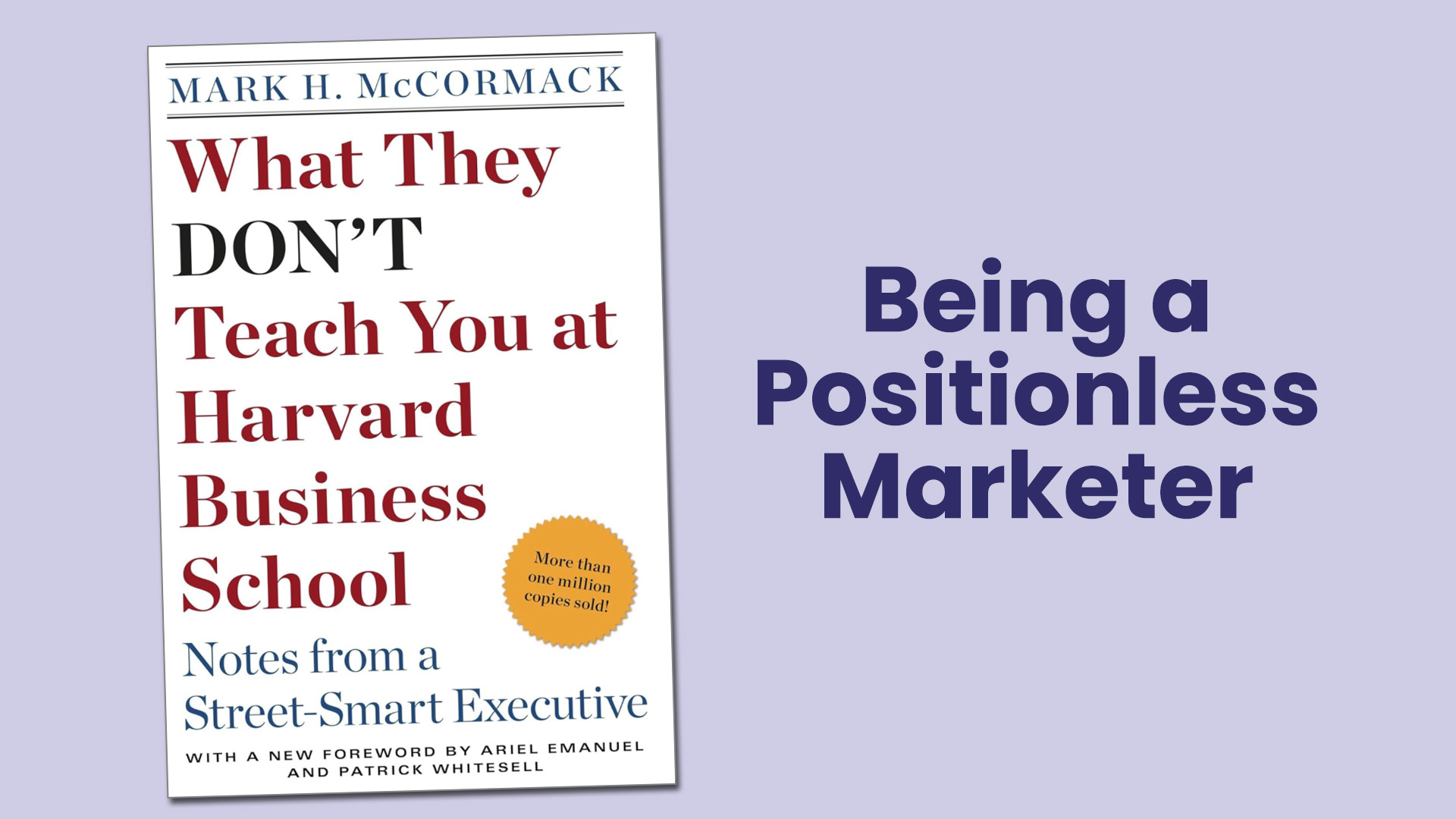
"Picture a marketer who sees VIPs starting to lapse on a Thursday morning. By noon, they've pulled the data, developed three creative variants, launched a triggered journey and measured incremental improvement. No tickets, no queues, no committees. By Monday, the save rate is up 18%. That's not luck; that's Positionless Marketing. It's do-it-now competence, powered by technology. The mindset comes straight from a classic business book: Mark McCormack's "What They Don't Teach You at Harvard Business School: Notes from a Street-smart Executive.""
"His playbook celebrates practical judgment, preparation, bias to action, relentless follow-through, relationships, and owning the details.Mark H. McCormack (1930-2003) was the lawyer-turned-entrepreneur who essentially invented modern sports marketing. He founded IMG in 1960 after a handshake deal with Arnold Palmer (later adding Jack Nicklaus and Gary Player) and pioneered athlete representation, brand endorsements, event management, licensing and media rights, building IMG into a global powerhouse.Positionless Marketing applies McCormack's same street-smart principles to modern marketing by collapsing the assembly line so one marketer can prepare, act and close the loop without waiting on analysts, designers, or engineers. The result is speed with accountability."
Positionless Marketing is a practice where a single marketer controls the full campaign chain — from data insight through creative, launch, and measurement — enabling rapid, accountable action. Technology enables triggered journeys and on-the-spot testing that lift retention (example: an 18% VIP save rate within days). The approach adapts street-smart principles of practical judgment, preparation, bias to action, relentless follow-through, relationship-building, and attention to detail. Five practical levers are preparation (data), bias to action (creative), follow-through (optimization), relationships (personalization at scale), and owning details (cutting the assembly line). Eliminating handoffs prevents lost audiences, outdated extracts, mis-sized segments, and delayed fixes.
Read at MarTech
Unable to calculate read time
Collection
[
|
...
]